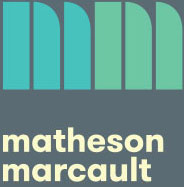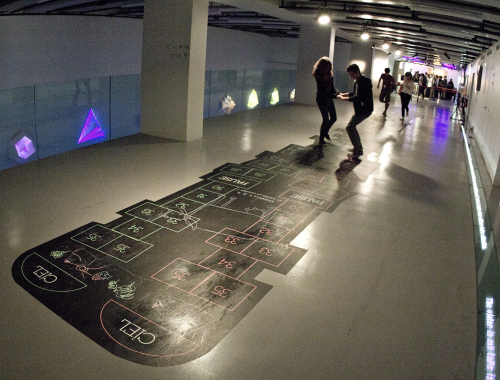This Tuesday, we popped over to the opening night of Block Stop‘s “By The End Of Us” (running at Southwark Playhouse until 11 June – two more nights, as of now).
We’ve shown Block Stop’s work at a couple of events in the past – at the Wellcome Play Spectacular and at Now Play This 2016. They make “staged interactive events in which participants simultaneously experience both video gaming and theatre”.
What this tends to mean, in practice, is that there’s a playable actor – a performer with a camera strapped to their head – whose point-of-view is livestreamed, in videogame first-person view, to a player. The playable actor asks for advice as they explore tunnels, talk to other performers and hunt for their objectives; the player gives instructions and suggestions, attempting to navigate the actor successfully through the story (solving puzzles, defusing bombs, tracking down enemies, suggesting things to say to other characters, etc etc).
I’ve never had a chance to try one of these first-person adventures, but by all accounts they’re excellent – satisfying and well-constructed, with the player experiencing a compelling sense of power and danger and connection to the performer.
But there’s a practical issue with the format. For each individual run of the game, there are three or four or five actors in the game; there’s a big empty building; there’s tech; there’s people to run that tech. It’s a lot of work and expense for just one player at a time.
So it’s been really interesting to see them experiment with different ways to expand their potential audience – to let more people play, without compromising the core experience. They’ve tried games where there are four or five people directing the playable actor together; and they’ve tried giving that group of players more things to do (at Wellcome Collection there were puzzles out in public space that players had to find and solve, to feed the information back to the playable actor). And with “By The End Of Us”, they’ve added a “multiplayer” audience acting in opposition to the single player.
The single player controls an assassin, Mia; the multiplayer audience (around 50 people, on the night we went) controls a security guard trying to stop her. We can see and hear the assassin’s live feed, which has (in the fiction of the game) been hacked by “our” side; this means we can see what she sees, and hear what the single player is telling her to do (go down this corridor, read this piece of paper, shoot this person). We’re also on radio with the security guard. A performer (in the role of the security guard’s handler) talks to the guard, talks to us, explains the options to us whenever a choice arises – and then, using a little clicky numberpad, we all vote, and the handler relays the winning choice to the guard.
Over the course of the night, we got the chance to vote maybe 25 or 30 times. It’s often hard to make a voting audience feel genuinely influential or invested – and with an anonymous voting system, the tension between wanting to make good decisions and just wanting to make something interesting happen can be heightened.
But “By The End Of Us” manages this difficulty pretty well, and had (at least in the run we played – the branching narrative means every run could be different) a couple of slight twists on voting. For example, there was a situation where instead of voting to stay or leave, we could vote “leave now” at any point during a scene, and as soon as the votes tipped above 50% the guard duly left. Mechanically, this felt interestingly different from a standard vote – and being able to see your vote added to the total when you made it was a neat sidelong proof of the genuine nature of the voting mechanic.
The work is also really effectively straightforward about its existence as both game and theatre piece. For example, you can see the health of all the different characters up on the screen, in a green health bar (that shades to orange and red as it goes down) – a really explicit “we’re playing here, this is a game” indicator. But the game screens themselves are controlled live from the performance space; the mouse-clicks that reduce health take place in full sight (you can see both the movement of the crew member controlling them, and the mouse pointer itself on screen). The game and the performance of the game-ness are, though never explicitly referenced, made simultaneously visible, and it really helps to establish the distinctive feel of the event.
There are a couple of down-sides to the overall structure of the work. Since the single player is the primary driver of action, the pacing can vary a lot. We happened to be set against a single-player who was really, really thorough in exploring the set, and for us as a multiplayer audience the resulting 95-minute running time felt a little long. Voting can also be frustrating if you happen not to be on the winning side of a vote for a while (as happened to me for the first half-hour of the show). And as a multiplayer audience member with only limited ability to affect the outcome, I felt interested rather than tense; I wanted to find out what happened, I wanted to explore the story, I always took part in any given vote, but I wasn’t so invested in whether we succeeded or failed in our overall aim.
But the multiplayer experience is definitely interesting, often funny and engaging, and there were moments when I felt genuine power as an audience member: when a vote split 51-49 and I was on the winning side, which happened a couple of times, it really felt like I’d tipped the balance. The mechanics were also often pretty funny, unexpectedly, another benefit of the clarity with which they and their performance were presented: a 50:50 split feels like a joke, and so does, say, an 80:10:10:0. Block Stop have also developed a set of really specific performance skills that help carry the game – the handler in the room annotating the jokes of the game mechanics with a sigh or a momentary expression; the actors in the livestreamed space expert at what must be a really difficult interaction, talking to a performer with a camera on their head, standing and looking natural while waiting for that performer to get instructions from the single player.
It’s a really neat path to see Block Stop explore, and great to see them experiment with turning their single-player game into something fifty people can play.




